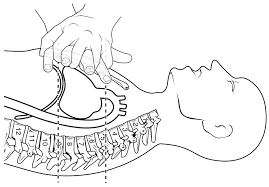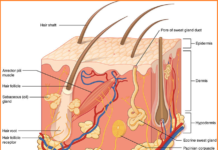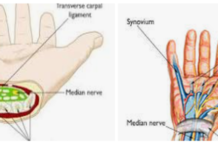Contents
Treatment when not breathing (artificial respiration):
- Loosen all clothing at waist, chest and neck.
- Tilt the head backward, while supporting the back of neck with your palm. This will lift the tongue to its normal position. This will lift the tongue to its normal potion. Thus the air passage will be cleared and the casualty may being to breath after a gasp.
- If breathing does not being after the above treatment, help movements of chest and lungs four or five times. This will be usually enough to start breathing. If breathing does not start even now, mouth to mouth (to-nose) breathing should be begun.
Mouth to Mouth breathing artificial respiration:
- Place the casualty on his back. Hold his head tilted back.
- Take a deep breath with mouth open widely.
- Keep nostrils of casually pinched.
- Cover the mouth of the casualty with your mouth smugly.
- Watching the chest, below into his lungs, until the chest bellows up. Withdraw your mouth. Note the chest falls back (It is hygienic to cover the mouth of casualty with your handkerchief or some clean cloth).
- Repeat the above 15 to 20 times a minute.
- If casualty is young (baby or child) the operations are as above, but your open mouth should cover both the mouth and nose of the casualty and blow gently.
- If the chest does not rise (as in 5 above) look for an obstruction.
– Turn the casualty to a side and thump his back. This will make the obstructing material come to the front of throat. Open the mouth and remove it with your finger covered with a piece of the cloth.
– If a child, hold it up by the feet and thump the back.
- Use mouth to nose respiration if mouth to mouth is not possible, but now the casualty’s mouth should be closed by the First Aider’s thumb.
- If heart is working, continue artificial respiration until normal breathing occurs. Send for Ambulance.
- If the heart is not working, you will notice:
– The face is blue or pale.
– Pupils are dilated.
– Heart beats and pulse at the root of neck (carotid) are not felt.
Then treat as follows:
- Place the casualty flat on his back on a hard surface (bench, table etc.)
- Give a smart hit with the edge of your hand on the lower and left angle of the sternum. This usually stimulates the heart to work.
- In case the heart does not work, persist the striking for 10-15 seconds at the rate of one stroke a second. Feel for the pulse at the root of neck all the time. If the pulse becomes regular and continuous, stop breathing, all the while artificial respiration has to go on.
Even if the casualty is breathing, but the breathing is not normal, it is wise to start artificial respiration. Do not begin thumping the heart or compression until you are sure that the heart has stopped beating.
External Heart Compression (artificial respiration):
(If there are two trained persons):
- This should go on along with artificial respiration. Therefore ask the First Aider giving mouth to mouth breathing to sit to the right of the casualty and place yourself on the left side.
- Feel and mark the lower part of the sternum.
- Place the heel of your hand on the marked part (make sure that the palm and fingers are not in contact with the chest).
- Place the heel of the other hand over it.
- With your right arm, press the sternum backwards, towards the spine. (It can be pressed back 1 to 1.5 inches in adults).
- Adults should be given about 60 pressures a minute. For children from two to ten years 3 pressures with one hand (heel) will be enough, but pressure should be 80-90 times a minute. For babies up to two years, 2 pressures with two finger is good enough if applied 100 times per minute.
- Press firmly but carefully. Carelessness (over pressure) may cause injury to ribs and deeper tissues.
- If the treatment is effective (a) Colour will become normal (b) Pupil will contract as improvement beings and (c) Carotid pulse begins with each pressure.
- When pulse is not restored, continue compression till the patient reaches hospital.
- Inflation of lungs to heart pressure should be as 2.15. If there is only one First Aider, he has to be very smart and active. Finish 15 heart compression, rush to head-side, given two inflation to the lungs, and get back to the heart and give 15 compression. Repeat these. If there are two First Aiders, No. 2 gives two lungs inflation. These are repeated. At the same time No. 1 can watch the pupils and No. 2 can feel the carotid pulse.
If you like this article (Artificial respiration), Please share with your friends.







